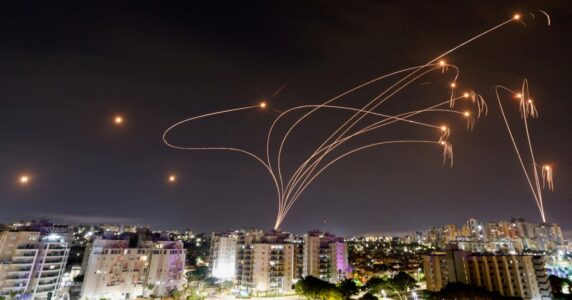Navigation and useful materials
The network of Telegram channels posing as Ukrainian, supported by Russian special services, including Legitimny, Rezident, Zhenshchina s kosoy, Olga Shariy, Anatoliy Shariy, once again proven their Kremlin origins while covering the strikes of Putin’s terrorists on the Ukrainian infrastructure on October 10.
In this material, we will analyse what messages they disseminated as part of the information attack that accompanied the missile attack, with the aim of influencing the consciousness of Ukrainians.
These Russian channels famously use the common propaganda trick of “60 to 40,” when part of the information is made to sound like pro-Ukrainian, while part of it is imbued with disinformation. The manipulators who created these channels play the role of extremely knowledgeable people who have their “sources,” “insider” information everywhere, who know the latest rumours and explanations for everything that is happening. They also allegedly have a world-view “independent” of authorities, which attracts many people who think that in this way, they act in a nonconformist way and support an “alternative opinion.” These channels managed to become popular among Ukrainian politicians a few years ago, until they were gradually exposed as Russian.
At the beginning of 2021, the SBU exposed some of these channels, finding that they were connected to the Russian military, namely, the Main Directorate of the General Staff of the Russian Federation (formerly the GRU). The agent network was established by the 85th Centre of the Main Directorate. According to law enforcement, the network included such channels as Legitimny, Rezident, Kartel, Spletnitsa, Cherny Kvartal. It also contained a number of regional channels created for regional audiences which the Kremlin included in its idea of “Novorossiya,” in cities such as Kharkiv, Dnipro, Zaporizhia, Kherson, Odesa. The headquarters was located in the centre of the unrecognized “Transnistrian Moldovan Republic,” Tiraspol, and the network employed “Russian spring activists” from Kharkiv and Odesa. Thus, the Russian doctrine of hybrid warfare was also implemented in Ukrainian smartphones.
As exemplified by the information support of the “retaliatory strike,” we can see how the Russian propaganda covered the October 10 attack and what goals Russian special services tried to achieve.
The analysis shows 4 main goals:
- To exempt Russia from responsibility and make Ukrainians believe it is not guilty of anything.
- To discredit the Ukrainian authorities, alleging its malicious intentions or weakness, such as the problems of the country’s air defence system.
- To sow panic, fear, and frustration among people.
- To discredit volunteers and fundraising.
Let’s look how this is implemented in practice in more detail.
Exempting Russia from responsibility
Let us go back to the acts of terror on October 10. For their information support, Telegram channels pretending to be Ukrainian promoted the message that Russia is only acting in response to terrorist attacks, in particular, to the destruction of the Kerch Bridge. In fact, it is clear that it would have been nearly impossible to prepare an attack of this scale in the two days that passed since the destruction of the bridge. “Legitimny” channel hints that the Ukrainian authorities called this strike upon themselves: “Our source in the Office of the President shared that the Office expected more destructive strikes from the Kremlin as retaliation for the Crimean Bridge to use them to receive more air defence from the West.”
Another accompanying narrative, in line with the Orwellian “war is peace,” claimed that with attacks, Putin is calling for peaceful negotiations.
It is also interesting how Russian info op specialists tried to influence the perception of the attack by Ukrainians right before the attack. They have tried to shift responsibility from Russia to unknown provocateurs and possibly the West.
On October 9 at 11 p.m., “Legitimny” wrote: “There is a risk that Zelenskyy will be forced to raise the stakes and a controlled provocation-tragedy will occur with hundreds of victims on live air, etc. It is very easy to make it, a couple of Grad packets from some objects that will provoke a catastrophe and mass death of people, and the culprit is always Russia anyway. Although these may be the same ‘unknown snipers’ who were on the Maidan, who incited hatred and carnage between the people and the authorities. Only now they don’t have rifles, but missiles, and there are now hundreds of such foreign groups in Ukraine who obey the ‘big guys from over the hill’ who absolutely don’t care about Ukraine and Ukrainians.”
The calculation is that some Ukrainians, who are inclined to believe in conspiracy theories, for example, that Putin’s Russia “is a normal country attacked by the West,” may begin to think that the shelling and killings could be the responsibility of an unknown third party rather than Russians.
Discrediting the Ukrainian authorities
Pro-Moscow Telegram channels immediately rushed to criticize the air defence system, trying to shift the negativity to Ukraine itself. Legitimny: “This time, Vinnytsia oblast, a strike on Ladyzhyn heat and power plant using a kamikaze UAV Geran-2. How the air defence systems let this UAV get so much inland is a big question.” It is interesting that the message about the Ukrainian air defence system’s “failures” was one of the main narratives on Russian television spread by the propagandist Skabeyeva.
Zhenshchina s kosoy channel: “Many people noticed that the condition of the Ladyzhyn power plant is somewhat miserable; not even doors were replaced in the past 30 years. Maybe Putin has decided to carry out his de-oligarchization of Ukraine?” We can observe how manipulators convince the trusting reader that it is our own fault that we are being killed, because things don’t work as well as they should.
Propaganda presented the ban on sharing information about the precise locations of the strike as an illustration of the authorities’ malicious intentions. They alleged it was to hide the true scope of destruction from people. People are suffering, and the Ukrainian authorities are telling us from the bunker that everything is fine. What a fail!
Rezident channel: “Russians timed it at daytime on purpose, so Ukrainians would see the results of the strikes. Because in 90% of cases, the Office of the President hushed up the results of strikes, giving the public false information that all missiles and UAVs were shot down. Keeping the masses under illusion.”
Sowing panic, fear, and frustration
Putin’s propaganda, masquerading as unknown do-gooders, fighters for the happiness of the Ukrainian working people, happily spread reports about panic among Ukrainians, queues at gas stations for fuel, news about a fake offensive from the Russian Federation and the departure of embassies. At 11:00 a.m. on October 10, Zhenshchina s kosoy channel wrote the following: “There have been rumours behind the scenes that the authorities were working on an option to announce the evacuation of Kyiv in the coming days, not later. Many are already talking about the offensive of the Russian Armed Forces. The embassies have already received a verbal instruction to leave Kyiv, we are waiting to see who will start the move first. The problem is that the air defence of Ukraine cannot repel even 5% of a massive missile attack. It’s just overloaded right now.”
As we know now, on that day, the military shot down not 5%, but 50% of Russian missiles.
Even the positive news about the promise to supply Ukraine with new air defence systems in response to Russian terrorist attacks was presented as another fail. “If someone thinks that now Ukraine will be given a sufficient number of air defence systems, they are deeply mistaken. They will give just enough so that Ukraine does not give up, but continues to ‘squabble’ with the Russian Federation, at the cost of its own destruction, deaths and chaos.” So, it is not Russia that is sowing death and chaos by attacking Ukraine, but someone else is doing all this, evidently.
Experts have long noticed that the Russians periodically create conflict situations in order to increase tension and chaos in societies. Another example is the video shared by the channel Zhenshchina s kosoy, which only shows that several women are aggressively trying to get into a shelter in school and fight with teachers who explain they cannot let strangers stay with the children. How are they commenting on this video? “Sometimes it seems that many people will kill each other sooner than some missiles. It is also impressive how some shelters are now for ‘chosen groups’ only… People have to help each other at such moments, and here, they are pushing each other to face the bullets, because somebody is inconvenienced. The country is in a complete mess, and the officials are making videos pretending that everything is fine…” This is clearly a low-grade manipulation aimed to shift the negativity from Russian terrorists to Ukrainians themselves.
Another message that was promoted during the attack was accusing Ukraine and NATO of planning to invade Belarus, forcing the latter to allow new Russian troops into its territory. All this happened against the background of the Lukashenko’s statement of the same day about the joint grouping of troops.
Discrediting volunteers and fundraising
In these examples, we see how the Russian special services attempt to devalue the volunteer movement of Ukrainians. The goal is to break Ukrainians’ will to resist and fight back against the invaders.
These narratives of the Russian propaganda were also analysed in detail in the material by Detector Media “Fake Support of the Bombing of Ukraine on October 10, 2022”.
Odesa, Russian style
Putin’s regime extends its tentacles to regional “brands” as well. One of the channels developed by the Kremlin’s special services, “Tipichnaya Odessa” (Typical Odesa), is trying to ramp up the feelings of regional patriotism and pit the city against the rest of Ukraine, boosting separatism.
From the covert promotion of pro-Russian and pro-imperial narratives in the previous years, Tipichnaya Odessa switched to almost overt Russian propaganda, for instance, accusing not Russia, which attacked its neighbour, of the deaths in Donetsk, but instead Ukraine and the West.
The channel is trying to incite hatred towards Ukraine’s democratically elected authorities using manipulative emotional techniques.
In addition to anti-Ukrainian content, the channel actively posts pictures and texts with the names of Russians from Odesa’s past, hoping that in this way they will be able to “erase” the crimes committed by Russians against Odesa in the residents’ memory.

Of course, propagandists have quite a lot of work to do, so the Tipichnaya Odessa channel and the new celebrity of Russian fascist propaganda Kots shared identical posts about Ukrainians shelling their cities by themselves on October 10.


Pseudo-Ukrainian channels also exist to double down on the main Kremlin narratives. Here is how the “classics” of Russian propaganda about Ukraine hiding behind civilians was promoted on Legitimny channel on October 10: “In the Office of the President, everyone is waiting for the Russian army to attack on the front line. The timing is 10-15 days. … We did write that the West warned Zelenskyy about Russian preparing major forces, but the Office of the President did not and will not warn Ukrainians, for fear of traffic congestions. In fact, the Bankova [Office of the President] is simply using civilians as an obstacle for the Russians.”
In these examples, we see masked information perpetrators trying to make Ukrainians behave in ways that benefit the Kremlin.
Namely: exempt Russia of responsibility for crimes, pit people and the authorities against each other, sow panic, fear, and frustration, and discredit the volunteer movement. Therefore, Ukrainians should do the exact opposite of what the neo-fascist regime from Moscow is urging them to do.
Other topics promoted by the pro-Kremlin network include a scary and cold winter when we will all freeze to death, attempts to slow down mobilization, particularly through lifting the restrictions on crossing the border. Many posts are dedicated to the narrative that Ukraine is the object of negotiations without its participation. In addition, the Russian network regularly blames the deaths of civilians on our air defence system, which, they say, hits residential buildings when trying to shoot down missiles.
Detector Media has analysed what messages this network of channels disseminated since the very beginning of the full-scale war. “After almost a week of relative neutrality, Telegram channels gradually started going back to sharing disinformation and conspiracy theories. First, the channels actively published photos and videos from the front line, but often added manipulative statements such as ‘They claim that the Russians did it, but we cannot confirm it.’ They actively speculated about blowing up bridges, asking who would be rebuilding them. This was followed by stories discrediting the Ukrainian authorities, particularly Zelenskyy. Next was the discrediting of the Ukrainian army and territorial defence units. As soon as in March, they quickly went back to the usual conspiracy theories about ‘external management.’ Every week, you could see the level of disinformation growing, and in June, the entire network went back to sharing ‘rumours’ filled with Russian disinformation.”
The key messages of Russian disinformation as of June 15 were “the West abandoned Ukraine,” “sanctions don’t work,” or “the West is weakening sanctions,” “division of Ukraine by the neighbouring countries,” “the Ukrainian authorities did not organize evacuation of civilians on purpose, and when it did, it was ineffective.” They celebrated collaborators, saying they “gave up the city but saved the people.” They also talked about “bad Ukrainian refugees,” who are impolite and picky. Another message was that “the West does not like Ukrainian refugees.” In order to demoralize Ukrainians, they also spread the following messages: Russia is stronger and will win,” “the Ukrainian authorities are lying about wins,” “Ukraine is running out of everything,” “the Ukrainian authorities have given up all grains,” “the Ukrainian authorities sell the weapons they receive,” “Ukraine will not receive new weapons because the military don’t know how to use it.” All of them were aimed at causing frustration so that Ukrainians would see no point in resisting.
The network of Russian “Ukrainian” channels is part of a large hybrid information war. According to the Kremlin’s plan, they, together with Medvedchuk’s channels, should plunge Ukraine into the bizarre world of Kremlin logic, fakes and conspiracy theories, where no one can be trusted, and therefore, the truth does not exist, or rather, it belongs to the most convincing liar.
In turn, such channels are only a puzzle piece of the global picture of Russian disinformation, the presence of which helps Putinism maintain its ambitions and dreams of victory and world domination. “They still believe in us — so we are doing the right thing.”
Naturally, Ukraine also needs to establish various platforms and media for Russian audiences and engage anti-regime Russians into their maintenance. And while they will not be quite as popular at first (because the truth is rarely as exciting), they will be a good investment for everyone opposing the current Russian regime.
In any case, Ukrainian society with its decentralization and networking, with its citizens’ self-sufficiency will defeat the centralized structure, which is Putin’s propaganda with all its disinformation networks.
If you have found a spelling error, please, notify us by selecting that text and pressing Ctrl+Enter.



